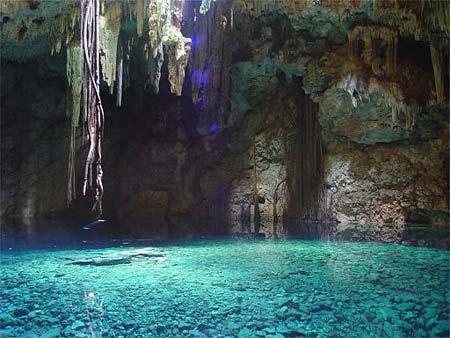(单词翻译:单击)
听力文本
If the water seeps through the ceiling quickly,
若是水从洞顶滴落的速度较快
then the calcite is deposited on the floor of the cave, and that creates stalagmites.
方解石就会在洞穴地面上沉积,最后形成石笋。
Variations in water flow and air currents produce an infinite variety of forms,
水流和气流的变化,造就了千姿百态的溶洞地形,
but all are created by the same process, the slow deposition of dissolved limestone.
但它们的形成过程都是一样的,都是由水溶碳酸钙缓慢沉淀而来。
And when stalactite meets stalagmite, a column is born.
钟乳石与石笋相遇后便形成了石柱
Structures like these in North America's Carlsbad Cavern can take many thousands of years to develop.
北美洲卡尔斯巴德溶洞中的这些构造,经历了数千年的形成过程。

But sometimes, the formations in a cave stop growing altogether.
但有时洞穴内的这些活动会完全停止
These flooded caves in Mexico have remained virtually unchanged for thousands of years.
墨西哥的这些水洞几千年来几乎保持不变
Since the last ice age, they've become cut off from the outside world,
自从上一个冰川期以来,它们便已和外界隔绝
yet their impact on life at the surface has been huge.
然而它们对地面上的生物却有着极其深远的影响
Five hundred years ago, they supported one of the world's great civilizations, the Maya.
500年前,它们维系着一个世界上最伟大的文明,玛雅。
视频及简介
洞穴是不受阳光控制的生物栖息地之一,但这并不意味着那里就不存在野生生物。本集节目将深入洞穴内神秘而永恒的黑暗,探索山洞、洞穴和隧洞中未知的地下世界。


